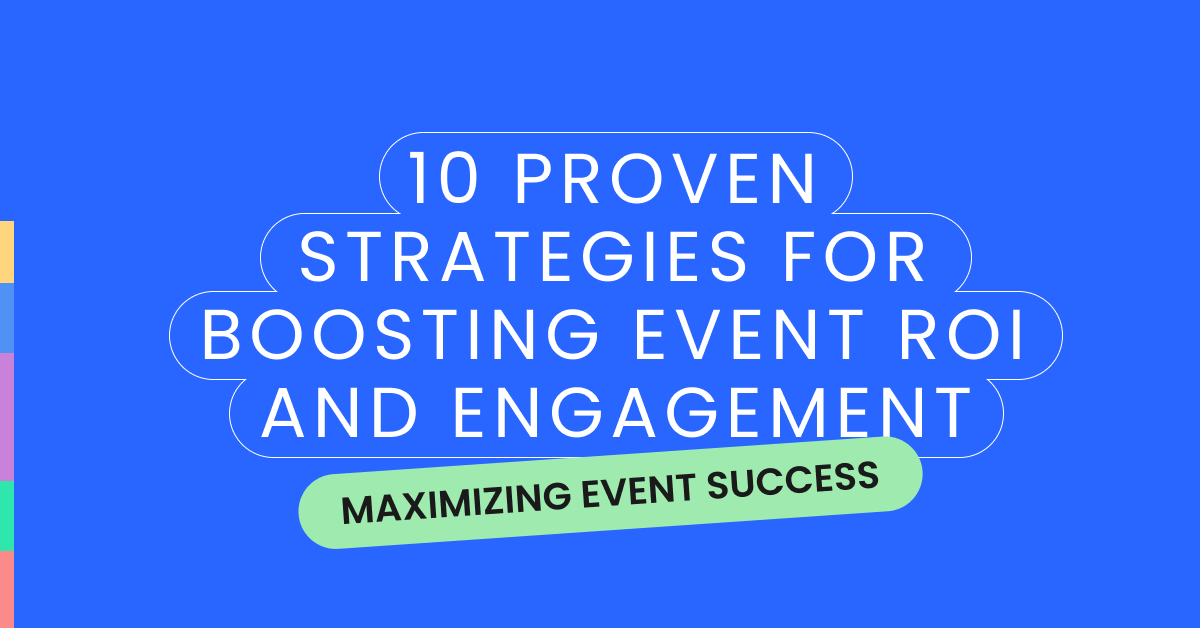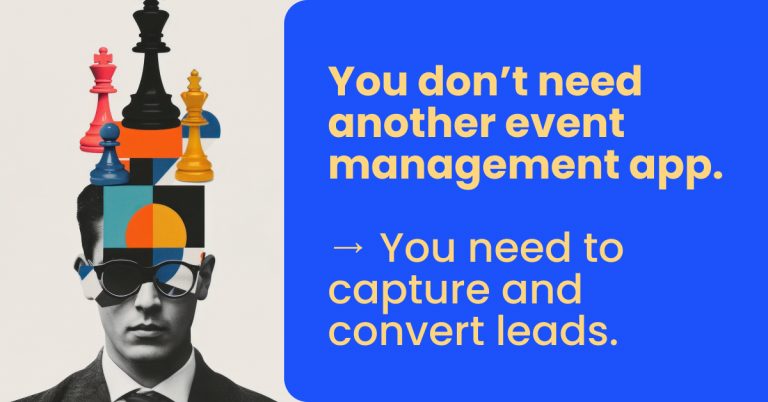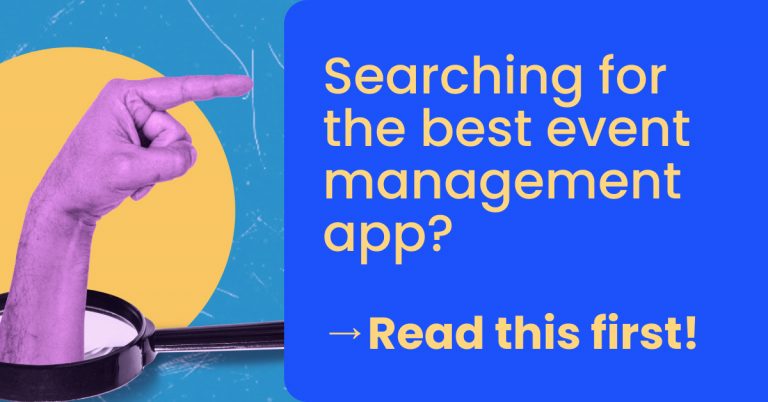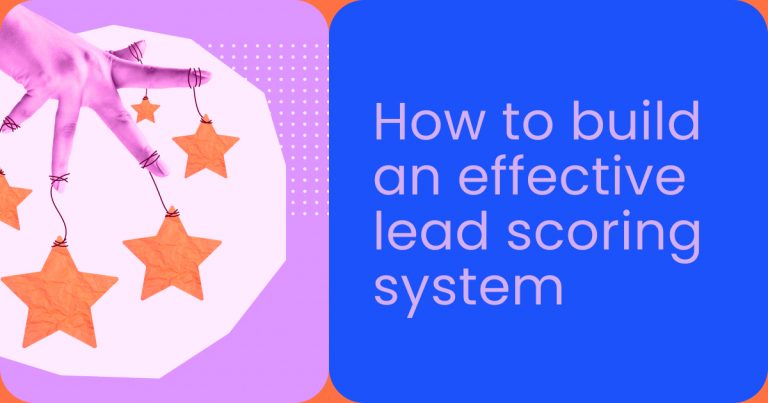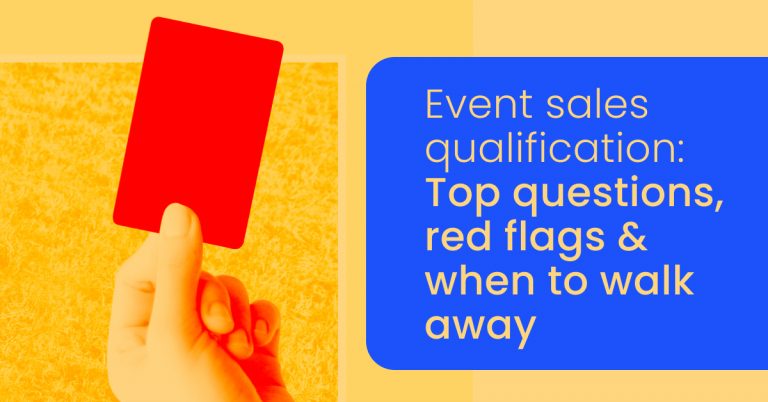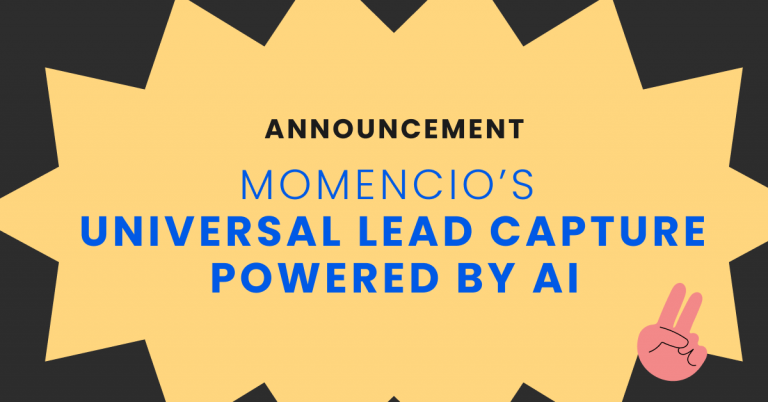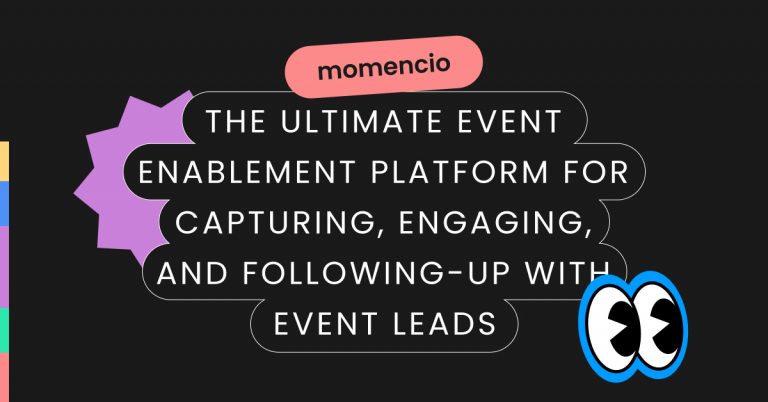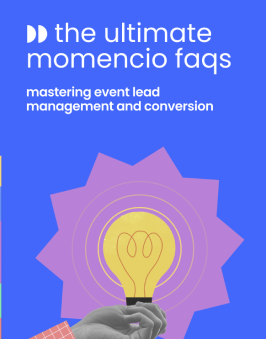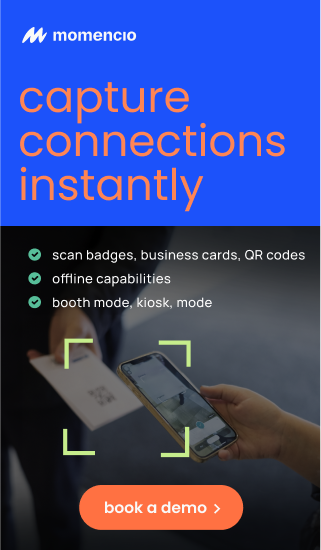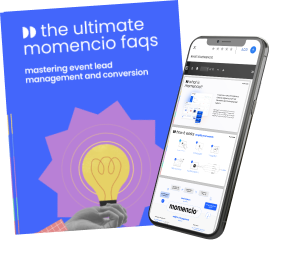Maximizing Return on Investment (Event ROI optimization) and attendee engagement is critical for event planning solutions and field marketing success. Implementing good techniques can greatly influence your event’s result, whether you’re planning a conference, trade fair, or expo.
The event industry is skyrocketing. The global event industry is expected to tap $1.76 trillion by 2029. Therefore, it’s more crucial than ever to implement the right strategies to quadruple your business growth.
In this thorough guide, we’ll look at 10 tried-and-true tactics that event planners and field marketers can use to boost event ROI and engagement while maintaining streamlined event management.
TL;DR: Maximize event ROI and attendee engagement with proven strategies like personalized content, real-time interactions, and effective post-event follow-ups. These tactics help capture more leads, enhance brand visibility, and ensure successful event outcomes.
What is event ROI?
Event ROI is the ultimate scorecard for your event’s success. It’s not just about dollars in versus dollars out—it’s about the value your event creates, both tangible and intangible. Think of it as the pulse check that tells you if your investment paid off or fell flat.
Sure, revenue generation is critical, but true ROI digs deeper. It’s the leads captured, the deals closed, the audience engagement, and the brand buzz your event created. It’s how much your event moves the needle for your business goals.
But here’s the catch: if you’re not measuring it, you’re guessing. And in the fast-paced world of events, guessing doesn’t cut it. Calculating event ROI ensures every dollar spent and every minute invested is accounted for—and that you’re set up to crush it at your next event.
What event ROI goals should exhibitors set?
Let’s talk about event ROI goals—the ones that take your event strategy from mediocre to legendary. Setting the right goals is the foundation of successful event planning, and for exhibitors, it’s all about focus. You don’t just show up to a trade show or conference; you show up with purpose.
Here’s where you start: Define your “why.” Are you here to capture leads? Drive sales? Build brand buzz? Your goals need to align with what success looks like for your business. And don’t stop at vague objectives—be specific, measurable, and ambitious.
For example, if lead generation is your priority, aim for a set number of qualified leads per day. If it’s all about sales conversions, set a goal for how many deals you want to close within 30 days post-event. Or, if brand exposure is the name of the game, track booth traffic, social media mentions, and new follower growth.
Key event ROI goals exhibitors should set:
- Lead generation: Set a realistic number of leads you want to walk away with. Better yet, identify the percentage of those leads you aim to qualify.
- Sales conversions: Don’t just count leads—track how many of them turn into customers.
- Engagement metrics: Measure how attendees interact with your booth, content, and team. Things like app engagement, booth dwell time, or session participation can reveal a lot.
- Brand awareness: Use metrics like social media activity, event press coverage, or booth foot traffic to measure your reach.
- Customer retention: Build relationships that last by tracking how many existing customers re-engage with your brand at the event.
Your goals should challenge your team while staying realistic. Aim high but always plan how you’ll get there. This clarity doesn’t just help you measure success—it keeps your entire team laser-focused during the event.
The result? You’re not just attending an event—you’re owning it. With the right ROI goals, every interaction, lead, and metric has a purpose, driving measurable impact for your business. Up next, we’ll explore how momencio calculators can simplify hitting those goals.
momencio calculators for measuring event ROI
Measuring event ROI doesn’t have to be guesswork. With momencio’s suite of ROI calculators, you get precision tools designed to take the complexity out of ROI tracking. These calculators help exhibitors and planners analyze costs, profits, and impacts with crystal-clear insights.
Here’s how momencio’s tools can revolutionize your event strategy:
1. Simple event ROI calculator:
This tool is perfect for a straightforward ROI analysis. It allows you to quickly calculate the ratio between your event revenue and costs, giving you an instant snapshot of profitability. It’s simple, efficient, and actionable.
2. Event API cost impact calculator:
API integrations can significantly influence event success, but they often come with costs. This calculator helps you understand how these integrations impact your bottom line by evaluating operational efficiencies and potential returns.
3. Event profit cost ROI calculator:
For those seeking deeper insights, this calculator dives into profit margins, operational costs, and ROI dynamics. It’s a powerful tool for understanding where every dollar is spent and how it contributes to your event’s overall success.
Strategies for increasing event ROI
1. Establish specific objectives
Begin with defining clear and quantifiable goals for your event, which is a critical step in developing effective event-planning solutions. What are your objectives? Having well-defined objectives can help drive your event planning process, whether generating leads, creating brand exposure, or driving sales. Ensure that your staff knows these goals and that their efforts align with them.
Consider dividing these ambitions down into smaller, more manageable ones. For example, if lead generation is your overall objective, you might establish precise goals for the amount of leads you want to acquire during the event. With these clear criteria, you can more effectively assess your progress.
2. Understand your target market
Targeting the right audience and market is important.
Effective event planning and Event ROI optimization begin with thoroughly understanding your target demographic. Make your event relevant to their needs and tastes by tailoring the material, activities, and networking opportunities. Consider surveying them or holding focus groups to learn more about their interests and problem issues.
Personalize your experiences by segmenting your audience. Identify crucial demographics and traits in your audience base and provide customized material or sessions to their interests. This degree of personalization boosts engagement and gives participants the impression that the event was created just for them.
3. Take advantage of event technology
67.4% of event organizers have switched or are planning to switch to event software solutions in 2024.
Utilize cutting-edge event technology, such as Momencio’s platform, to expedite event management and collect valuable data, an important part of streamlined event management. For example, real-time analytics and lead scoring can give information for on-the-fly decision-making. These technologically advanced tools not only improve the efficiency of your event but also provide a competitive advantage.
Consider including event applications that provide participants with a digital program, interactive maps, and real-time information. This improves the attendance experience and provides a chance to collect data on their app engagements.
4. Make the experience unique
Customize each attendee’s event experience, a critical component of efficient event planning solutions. Make participants feel appreciated and involved by using customized microsites and interaction strategies. Incorporating their names, interests, and previous encounters into your message will help establish a genuine connection.
Consider providing tailored agendas or suggestions depending on the interests and conduct of your participants. You can boost engagement and pleasure by recommending programs, exhibitors, or networking opportunities suited to each person.
5. Make interactions game-like
Include gamification aspects in your event for a unique approach to Event ROI optimization. Gamified experiences inspire visitors to connect with your brand and one another, increasing engagement and providing memorable moments. Create challenges, scavenger hunts, or interactive quizzes to keep guests entertained during the event.
Gamification can motivate people to visit certain exhibitor booths or attend certain sessions. Gamification not only provides a playful aspect, but it also boosts attendee involvement and engagement.
6. Pre-event promotion
Invest in pre-event marketing to build enthusiasm and anticipation, an essential component of efficient, streamlined event management. Email advertising, social media promos, and teasers can all help to generate excitement for your event. To spark the curiosity of prospective guests, use attractive images, countdowns, and sneak peeks.
Create teaser films or social media postings highlighting major speakers, session themes, or exhibitors. Encourage early registration by providing special benefits such as access to a pre-event webinar or networking session. Increased attendance and engagement can be achieved via targeted marketing.
7. Registration simplified
The key to streamlined event management is to simplify the registration procedure. Reduce guest friction and provide a seamless check-in experience using efficient badge and business card scanning.
Long lines and complicated registration forms might turn off prospective participants. Therefore, this stage must be optimized. To improve the entire experience, consider giving self-check-in kiosks and smartphone registration alternatives.
8. Insights driven by data
Event technology can be used to collect and analyze attendance data for successful Event ROI optimization. Throughout the event, real-time activity monitoring and lead behavior insights enable you to make data-driven choices.
Determine which sessions or activities are the most popular and make real-time adjustments to your event based on these findings. Integrate feedback systems to collect participant feedback, which will aid in refining future event tactics.
9. Follow-up after the event
Don’t let the relationship stop with the event. Implement extensive post-event follow-up methods to optimize Event ROI and keep attendees engaged. Begin by sending guests customized thank-you notes expressing gratitude for their participation. Share event highlights, presentations, and other materials relevant to their interests and needs. This post-event communication is a critical touchpoint that maintains your brand in people’s minds.
Consider developing a post-event content center on your website. This hub can include event recordings, presentation slides, and articles summarizing significant points.
10. Evaluate and improve
Measuring your event’s performance is essential for continuous development and Event ROI optimization. Conduct a thorough post-event review against your set goals. Analyze the amount of leads produced, the conversion rate, attendee comments, and any other information that can be useful. Determine areas for improvement as well as ones for achievement.
Collect information from your event’s crew and speakers. What was successful, and what might be improved? Encourage open feedback to ensure that future events are continually improved.
Conclusion
Optimizing event ROI and engagement is a never-ending process involving careful planning, audience comprehension, and cutting-edge event planning solutions and technology.
Event planners and field marketers can maximize the performance of their events by using these ten tried-and-true tactics, which will eventually lead to improved Event ROI optimization and better attendee engagement.
Do not hesitate to get in touch with us if you have any questions or want more support in applying these tactics for your next event. We’re here to assist you in optimizing your event ROI and advancing your event marketing.
If you’re looking to maximize your event ROI, you can try our free demo event management system to feel the difference.
FAQs
- What is event ROI, and why is it important?
- Event ROI measures the success of an event by comparing its costs to the value it generates, including financial returns and non-monetary metrics like brand awareness and engagement.
- How can exhibitors set effective ROI goals?
- Exhibitors should define clear, measurable goals like lead generation, sales conversions, engagement rates, or brand exposure that align with their broader business objectives.
- How does post-event data impact ROI optimization?
- Post-event data provides insights into attendee behavior, engagement, and lead quality, helping planners refine strategies and improve ROI for future events.
- What role does event technology play in ROI tracking?
- Event technology enables real-time analytics, lead scoring, and performance tracking, simplifying ROI measurement and optimizing event outcomes.
- How can momencio tools enhance event ROI?
- momencio provides advanced tools like ROI calculators, lead capture solutions, and engagement analytics to help businesses measure success and drive growth.
